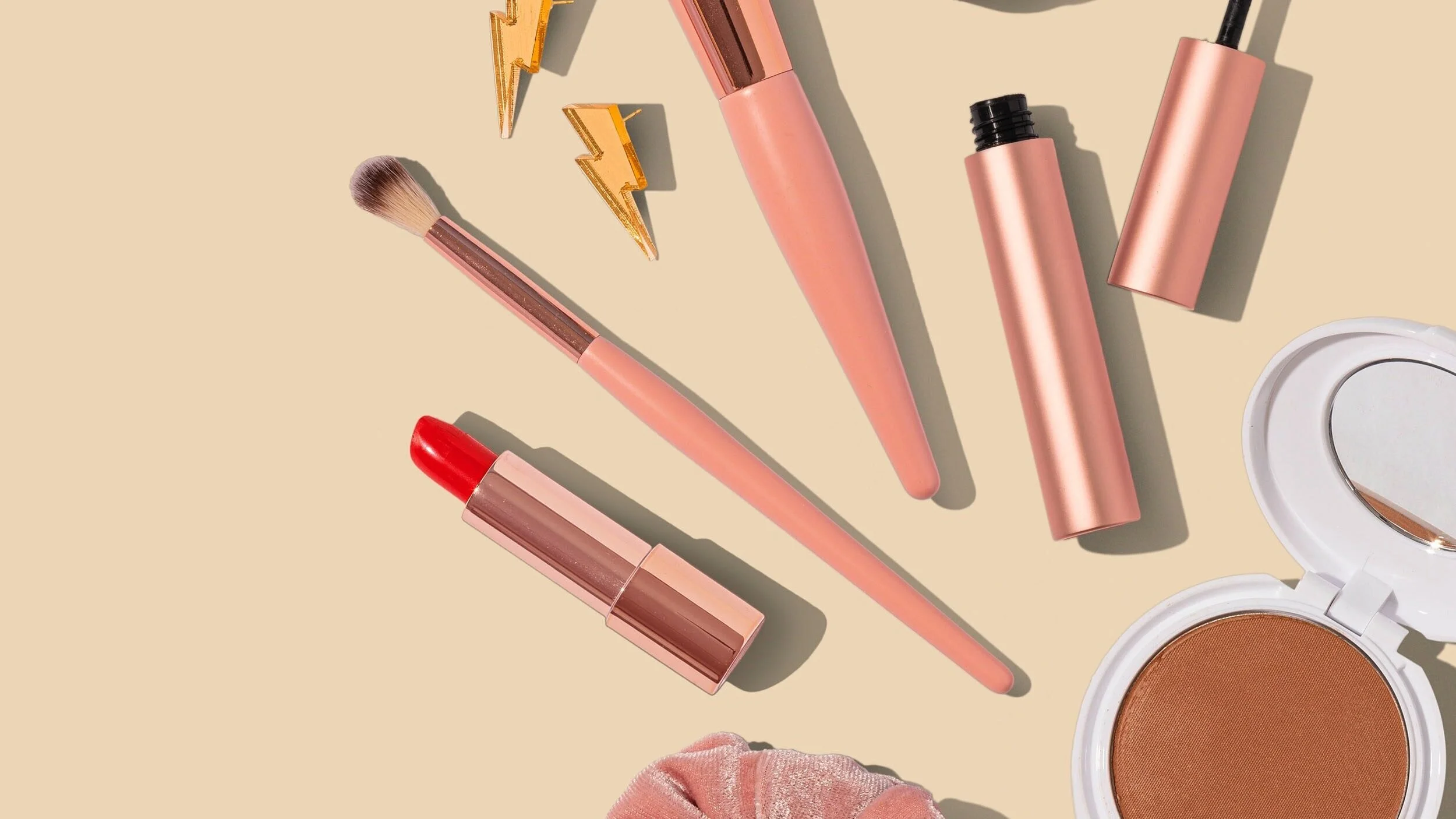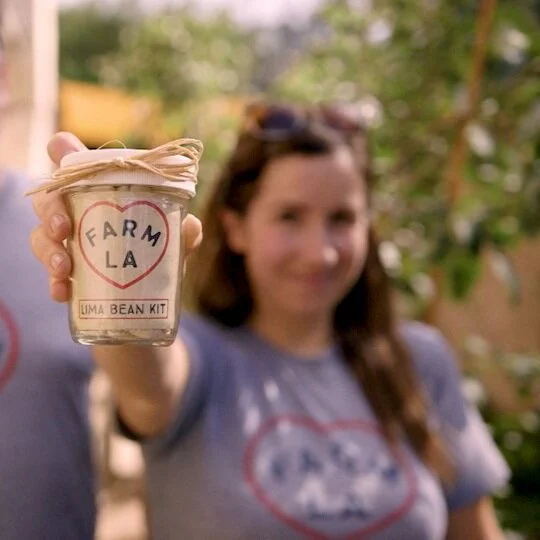The Future of Plastic-Free Cosmetics
by Fiona Osborn
Plastic is everywhere: in our oceans, our food, and even in the atmosphere. No place is left untouched by plastic.
The source of all this plastic? Us. Plastic is a synthetic material that we manufacture and use in almost every industry and consumer product, including the $500 billion personal care and cosmetics industry. [1] This industry encompasses products used almost daily—such as makeup, toothpaste, shampoo, and soap—that contain plastics in both the packaging and the product itself.
These plastics can be classified into large pieces of plastic and incredibly small pieces of plastic, known as microplastics. Microplastics can be broken down from larger pieces of plastic, but in the personal care and cosmetics industry, they are manufactured specifically for items like exfoliants. [2] Microplastics from personal care products are recognized as a significant source of plastic pollution detrimental to the environment. [3]
Governments around the world have taken steps to prevent this microplastic contamination, and in January 2020, a California law banning the use of microplastics in personal care products went into effect. [3] However, this is still a concern in many parts of the world, and microplastics are still released into the environment from larger plastic bottles, making them a continued threat to the environment.
Plastics have exploded over the course of the last century, and our reliance on them is only predicted to expand exponentially. Since the mid-20th century, plastic production has increased dramatically, going from 1.7 million tons in the 1950s to 335 million tons in 2016. [2] These plastics will inevitably end up in the environment, and once released, they will stay there. Not only is this a growing concern to the natural world, but research is showing it has direct consequences on our health and well-being.
The Detrimental Effects of Plastic
Cosmetics are a dual source of microplastics. [1] First, the plastic containers that most personal care products are found in are discarded after use and then break down into smaller microplastics. Additionally, products like face wash, bubble bath, sunscreen, or toothpaste actually contain microplastics that are washed down the drain to wastewater treatment plants. [3] These treatment plants cannot successfully capture all of these particles, so they are eventually released into the environment.
Plastic in our Food
One consequence of plastics entering our ecosystems is that they inevitably find their way into the food chain. The microplastics deposited by cosmetic waste are ingested by marine organisms, and through a process called bioaccumulation, they build up in the environment and become increasingly concentrated as it moves up the food chain. [2] Plastics in aquatic systems have been widely studied, and microplastics and associated toxins have been found in the tissue and guts of seafood. However, plastic pollution is not limited to marine life; it has been found throughout our food systems and been identified in table salt, honey, and drinking water. [2] There is so much plastic in our food that it is estimated that each person ingests around 50,000 particles every year. [4]
Plastic in Our Bodies
Although the detrimental effects plastic has on the environment are relatively widely known, people are much less conscious of the impact plastics have on their own health. Rather than the plastic itself, most plastic-related complications like cancer and developmental problems are related to the toxins that are released from plastics. Plastics easily absorb toxic chemicals in their environment. [5] Many also contain additives that will leach out and cause more toxins to be released. These chemicals are carcinogenic and can cause reproductive abnormalities. [2] Although ingestion of microplastics affects the digestive system, microplastics have the tendency to move throughout the body’s systems, redistribute, and collect in other organs and tissues. They have been shown to disrupt our hormone-regulating systems and increase the likelihood of obesity. [6] Furthermore, these toxins have been linked to cardiovascular disease and developmental problems. [5]
Plastic in the Air
Other forms of plastic-related health problems come from airborne microplastics. Large concentrations of microplastics have been found in the atmosphere. [6] When inhaled, these microplastics enter the lungs and can be difficult to remove from the respiratory system as they are very irritating and persistent. The inhalation of these particles can cause lung irritation, inflammation, and asthma-like symptoms. The nature of these plastic particles, as well as the chemicals mixed in with them, have also been linked to lung cancer and cardiopulmonary disease. [6]
The known health risks associated with plastics are alarming, and the full extent of the effects microplastics have on our health is still relatively unknown. With the rise of plastic in the environment, these serious health problems will become more common, raising health-related expenses and reducing quality of life for many people. It is important to reevaluate our consumption habits to mitigate these serious health risks.
The push for plastic-free cosmetics
To reduce plastic consumption, personal care products are a great place to start, as there are simple changes you can make to help reduce the amount of plastic in our environment while simultaneously benefiting yourself.
Natural Exfoliants
Natural facial cleansers and other similar products do not use microplastics, have added benefits for your skin, and have a lower impact on the environment. Common replacements for microplastics include whole oats, jojoba beads, and apricot shells, which all have good effects on your skin. Using oats in facial cleansers helps soak up excess oil on your face and acts as an anti-inflammatory. [7] Jojoba beads can be used as an exfoliant and also have anti-inflammatory effects. Jojoba beads, as well as the alternative apricot, can help repair your skin.
Alternative Packaging
Another significant way to reduce plastic consumption is by not purchasing cosmetics in plastic bottles and packaging. Almost every product that comes in plastic cannot be repurposed or recycled, which makes them a large source of waste. [1] However, an increasing number of notable makeup brands have turned to materials such as bamboo and stainless steel for their product packaging. Similarly, other personal care products, such as deodorants, are being packaged in tubs and paper tubes instead of hard plastic. Some products have even been redesigned to use sustainable packaging. Lush Cosmetics sells a bar shampoo that comes in paper wrapping, rather than a classic liquid bottle, by reducing the water content of their shampoo and making it more concentrated. [1]
Refillable Containers
Finally, more personal care products are now offered in refillable containers. Not only does this eliminate plastics, but it also produces less waste, since the containers are able to be reused. Refillable containers have the potential to develop into a popular alternative, especially since this is a cheaper way to buy personal care products. This is because you will not have to pay for the cost of packaging each time you make a purchase; instead, you can refill these products in bulk and save both money and trips to the store. This makes buying in bulk convenient, especially since companies like Refillery LA and large stores like Whole Foods now offer refillable shampoos and other products. At UCLA, the organization Good Clothes Good People hosts hygiene refill events where you can get free refills on personal care products.
Ultimately, simple tasks like switching your makeup brand or trying out bar shampoo can have a positive impact on the environment. Not only can this directly benefit you with improved skin care and lower costs, but these small changes in your daily life can have a huge impact on the amount of plastic in the environment, and therefore impact your future health.
The Bottom Line
Personal care products are a great place to start reducing plastic use because there is so much room for improvement, but the trend toward plastic-free products has already begun. Looking to the future, knowledge and innovation are needed to educate people on the negative effects of plastic and provide them with alternative options. Because plastics are integrated into the economy and the world is reliant on them, the plastic trend will only continue—with plastic use expected to quadruple by 2050—unless people recognize the harm plastics have on both the environment and their own health and do something about it. [2]
References
“The beauty industry generates a lot of plastic waste. Can it change?” nationalgeographic.com (2019).
“Occurrence, sources, human health impacts and mitigation of microscopic pollution.” Environmental Science and Pollution Research. (2018).
“Characterisation, quantity and sorptive properties of microplastics extracted from cosmetics.” Marine Pollution Bulletin. (2015).
“Current insights into monitoring, bioaccumulation, and potential health effects of microplastics present in the food chain.” Foods. (2020).
“Micro- and nano-plastics and human health.” Marine Anthropogenic Litter. (2015).
“Airborne microplastics: consequences to human health?” Environmental Pollution. (2018).
“Anti-Inflammatory and Skin Barrier Repair Effects of Topical Application of Some Plant Oils” International Journal of Molecular Sciences. (2018).









